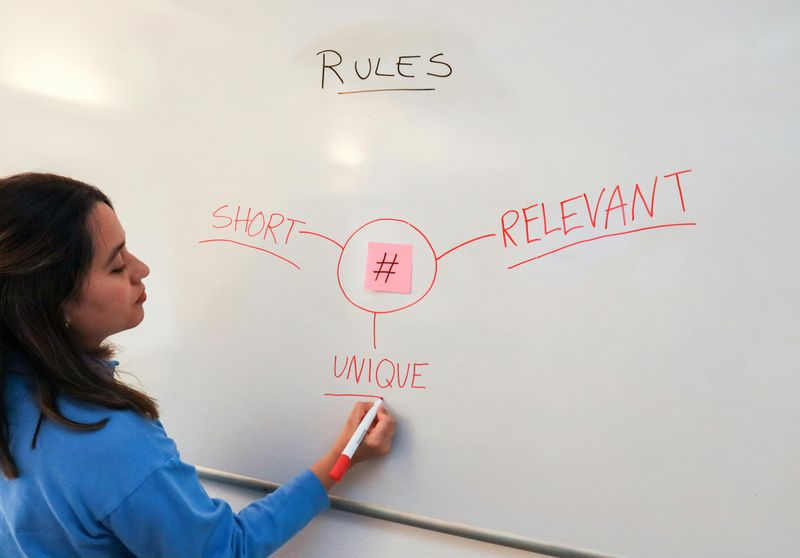¿Alguna vez has echado un vistazo a la oficina y has pensado: "Vaya, las cosas han cambiado mucho por aquí"? Pues no eres el único. A medida que la generación más joven se incorpora al mercado laboral, está cambiando las cosas y reescribiendo el manual de cómo debe ser la vida en la oficina.
Atrás quedaron los días de trajes estirados y reuniones interminables. En su lugar, estamos asistiendo a una oleada de nuevas ideas que dan prioridad a la flexibilidad, la inclusión y, seamos sinceros, un poco de diversión.
Ya sea para hacer frente a la tradicional rutina de nueve a cinco o para acabar con el rígido código de vestimenta, la Generación Z y los Millennials quieren romper moldes. Averigüemos cuáles son las normas de oficina de la vieja escuela que se están dejando de lado y por qué es algo positivo para todos.
1. Replantearse los códigos de vestimenta
¿Recuerdas aquellos días en los que ir a trabajar significaba ponerse un traje rígido o una falda lápiz? Pues ya no. Los jóvenes profesionales de hoy quieren expresar su individualidad, y eso a menudo se traduce en códigos de vestimenta más relajados en la oficina.
No me malinterpretes: no van en pijama (a menos que trabajen desde casa). Pero los días de las americanas y los tacones obligatorios están definitivamente contados.
A menudo se ve una mezcla creativa de atuendo informal y elegante que permite a los empleados sentirse cómodos sin dejar de parecer profesionales.
Este cambio no sólo ayuda a reducir el estrés de elegir un atuendo "apropiado" cada mañana, sino que también fomenta un entorno más integrador en el que todos pueden expresarse libremente.
Al dejar de lado las rígidas normas de vestimenta, las empresas fomentan una cultura en la que creatividad y comodidad van de la mano. ¿Y quién sabe? Puede que sentirse bien con lo que llevas puesto también aumente la productividad.
Además, este cambio es un guiño a la comprensión de que el talento no se mide por el corte de tu traje, sino por las ideas que tienes en la cabeza.
2. El fin del horario de 9 a 5
La tradicional jornada laboral de nueve a cinco se está convirtiendo poco a poco en cosa del pasado. Los trabajadores más jóvenes defienden la idea de que la productividad no tiene por qué limitarse a ese horario rígido.
Están demostrando que, mientras se haga el trabajo, no debería importar cuándo ni dónde se haga. Los horarios flexibles son cada vez más comunes, lo que permite a la gente trabajar durante sus horas más productivas.
Para algunos, esto puede significar madrugar, mientras que a otros les va mejor por la noche. La clave está en el equilibrio y en encontrar lo que más te convenga. Esta flexibilidad también ayuda a lograr un mejor equilibrio entre la vida laboral y personal, algo muy importante para la Generación Z y los Millennials.
Al abandonar el estricto régimen de nueve a cinco, las empresas no sólo atraen a los mejores talentos, sino que también los retienen. Los empleados aprecian la confianza y la autonomía que se les da.
Reconoce que la vida de cada uno fuera del trabajo es diferente, y tener en cuenta esas diferencias hace que los empleados sean más felices y estén más comprometidos.
3. Desafiar las jerarquías
¿Recuerdas cuando ascender en la empresa era el objetivo final? Bueno, esa escalera tiene un aspecto muy diferente hoy en día.
Las generaciones más jóvenes desafían las estructuras jerárquicas tradicionales y abogan por organizaciones más planas en las que se escuche la voz de todos. Esto significa menos rigidez en las funciones y más colaboración en todos los niveles de la empresa.
La idea es sencilla: las buenas ideas pueden venir de cualquier parte, no sólo de arriba. Cuando se anima a todo el mundo a contribuir, se fomenta la innovación y se crea un lugar de trabajo más dinámico. Además, ayuda a acabar con el factor de intimidación que suele suponer tratar con los superiores.
Las jerarquías más planas también fomentan el sentido de propiedad y responsabilidad entre los empleados. Cuando las personas sienten que sus contribuciones importan, se implican más en el éxito de la empresa. Es una situación en la que tanto la organización como sus empleados salen ganando.
4. Adiós a los cubículos
Los cubículos han sido durante mucho tiempo un elemento básico de la vida en la oficina, pero seamos sinceros: no son precisamente inspiradores. Por eso muchas empresas se están alejando de la granja de cubículos y disfrutan de espacios abiertos y colaborativos. La idea es crear un entorno que fomente la comunicación y el trabajo en equipo.
Los diseños abiertos facilitan que los compañeros interactúen, compartan ideas y trabajen juntos en proyectos. Esta configuración no solo fomenta la creatividad, sino que también ayuda a crear un sentimiento de comunidad en el lugar de trabajo.
Por supuesto, no está exenta de dificultades: el ruido puede ser un problema, y a veces sólo necesitas un poco de intimidad.
Para hacer frente a estas preocupaciones, las empresas también están incorporando zonas tranquilas y espacios de descanso donde los empleados puedan concentrarse o reponer fuerzas. El objetivo es crear un entorno flexible que se adapte a los distintos estilos de trabajo.
Si está cansado de mirar tabiques grises, le alegrará saber que la oficina del futuro consiste en romper barreras, literal y figuradamente.
5. Reuniones informales
Atrás quedaron los días de las estiradas reuniones en las salas de juntas con órdenes del día tan densos como novelas. Los trabajadores más jóvenes abogan por un enfoque más informal de las reuniones, centrado en el diálogo abierto y la colaboración más que en protocolos rígidos. Piensa en acogedoras charlas de café en lugar de sentadas formales.
Este cambio permite conversaciones más genuinas, en las que las ideas pueden fluir libremente sin las limitaciones de las estructuras de reunión tradicionales. Se trata de crear una atmósfera en la que todos se sientan cómodos contribuyendo, independientemente de su posición.
Con un estilo de reunión más relajado, las empresas fomentan la creatividad y la innovación. Además, se ahorra tiempo: ya no hay que sentarse a escuchar interminables presentaciones de PowerPoint que podrían haberse enviado por correo electrónico.
6. Abandonar la jerga
La jerga empresarial solía ser el lenguaje de la oficina, pero admitámoslo, no es precisamente una comunicación eficaz. Las generaciones más jóvenes apuestan por la claridad y la sencillez, y eso significa decir adiós a las palabras de moda y las frases sin sentido.
Prefieren un lenguaje directo que todo el mundo pueda entender, lo que hace que la comunicación sea más eficaz.
Este alejamiento de la jerga no sólo ayuda a transmitir el mensaje, sino que también hace que el lugar de trabajo sea más integrador. Al fin y al cabo, nadie debería necesitar un diccionario para entender a sus compañeros. Fomenta la transparencia y garantiza que todo el mundo esté de acuerdo.
Al abandonar la jerga, las empresas fomentan un entorno en el que la comunicación es clara y concisa. Es más fácil colaborar y trabajar por objetivos comunes cuando todo el mundo entiende de qué se está hablando.
7. Trabajo a distancia
El trabajo a distancia solía ser una ventaja poco frecuente, pero ahora se está convirtiendo en una expectativa estándar para muchos trabajadores jóvenes. La posibilidad de trabajar desde cualquier lugar cambia las reglas del juego, ya que ofrece flexibilidad y un mejor equilibrio entre la vida laboral y personal.
No se trata sólo de evitar los desplazamientos; se trata de tener la libertad de elegir dónde y cuándo se trabaja mejor.
Para algunos, eso puede significar trabajar desde casa en pijama, mientras que otros pueden preferir una cafetería o un espacio de cotrabajo. La clave es que los empleados puedan adaptar su entorno de trabajo a sus necesidades, lo que aumenta su productividad y satisfacción.
Las empresas que ofrecen trabajo a distancia están descubriendo que no sólo atrae a los mejores talentos, sino que también reduce los gastos generales. Permite una plantilla más diversa, ya que la ubicación deja de ser un obstáculo para la contratación. Si sigues encadenado a un escritorio cinco días a la semana, quizá sea el momento de explorar las opciones de trabajo a distancia.
8. Equilibrio trabajo-vida privada
Lograr un equilibrio saludable entre la vida laboral y personal ya no es solo una palabra de moda; es una prioridad para la Generación Z y la Generación del Milenio. Desafían la idea de que hay que estar "siempre conectado" para tener éxito y abogan por establecer límites que permitan que la vida personal coexista con las responsabilidades profesionales.
Esto significa tomarse tiempo para el autocuidado, las aficiones y la familia sin la culpa de no trabajar horas extras. Los trabajadores más jóvenes son conscientes de que el bienestar mental y físico repercute directamente en la productividad y la creatividad, por lo que abogan por entornos que respeten estas necesidades.
Al promover un estilo de vida equilibrado, las empresas ven empleados más felices y comprometidos, menos propensos al agotamiento. Es un cambio hacia el reconocimiento de que una vida personal plena puede complementar y mejorar el rendimiento laboral.
Si te encuentras constantemente atado al correo electrónico del trabajo, puede que haya llegado el momento de reevaluar esos límites y buscar un equilibrio más saludable.
9. Flexibilidad en las funciones
Atrás quedaron las rígidas descripciones de puestos de trabajo que te encasillaban en una única función. Los jóvenes profesionales de hoy prefieren la flexibilidad en sus funciones, asumiendo múltiples responsabilidades y aprendiendo nuevas habilidades. Se trata de adaptarse y estar abierto a nuevos retos.
Este enfoque no sólo hace que el trabajo sea más interesante, sino que también permite a los empleados crecer y desarrollarse en sus carreras. Al llevar diferentes sombreros, adquieren un conocimiento más amplio de la empresa y pueden contribuir con mayor eficacia.
Las empresas también se benefician, ya que esta flexibilidad da lugar a una mano de obra más dinámica que puede pivotar rápidamente cuando es necesario. Si te sientes estancado en tus tareas actuales, considera la posibilidad de hablar con tu supervisor para explorar nuevas oportunidades dentro de tu puesto.
Te sorprenderá lo mucho que disfrutas saliendo de tu zona de confort.
10. Integración de la tecnología
Con la tecnología evolucionando a la velocidad del rayo, a los trabajadores más jóvenes les encanta integrar las últimas herramientas en sus rutinas diarias. Desde el software de gestión de proyectos hasta las aplicaciones de comunicación, la tecnología ayuda a agilizar los flujos de trabajo y mejorar la productividad.
La clave está en encontrar el equilibrio adecuado entre tecnología e interacción humana. Las generaciones más jóvenes entienden la importancia de utilizar la tecnología para mejorar, no sustituir, las conexiones personales en el lugar de trabajo.
Mediante el uso de la tecnología, las empresas pueden seguir siendo competitivas y ágiles en un mundo que cambia rápidamente. Ya sea mediante videollamadas para conectar con equipos remotos o implantando soluciones basadas en IA, las posibilidades son infinitas.
11. Priorizar la salud mental
La salud mental ya no es un tema tabú en el lugar de trabajo, gracias a la defensa de la Generación Z y los Millennials. Están a la cabeza en la priorización del bienestar mental, abogando por recursos y sistemas de apoyo que promuevan un entorno de trabajo saludable.
Esto incluye el acceso a servicios de asesoramiento, jornadas de salud mental y el fomento de una cultura en la que los empleados se sientan cómodos hablando de sus necesidades de salud mental. Se trata de reconocer que la salud mental es tan importante como la salud física y debe tratarse con el mismo nivel de atención.
Al dar prioridad a la salud mental, las empresas cuentan con empleados más felices y comprometidos, menos propensos al agotamiento. Es un cambio hacia la comprensión de que una mente sana contribuye a una cultura laboral sana.
Si tienes problemas de salud mental en el trabajo, no dudes en pedir ayuda. No pasa nada por no estar bien a veces, y hay recursos disponibles para ayudarte.
12. Aprender a través de la retroalimentación
Los trabajadores más jóvenes están revolucionando la forma de dar y recibir feedback en la oficina. Atrás quedaron las evaluaciones anuales del rendimiento, que parecían más bien interrogatorios. Hoy se trata de un feedback continuo que ayuda a los empleados a crecer y mejorar.
Este enfoque fomenta una cultura de transparencia y comunicación abierta, en la que las críticas constructivas son bien recibidas y se consideran una oportunidad de desarrollo. Se trata de crear un entorno en el que la retroalimentación sea una vía de doble sentido, que beneficie tanto al empleado como a la organización.
A través de la retroalimentación continua, las empresas cultivan una mano de obra más adaptable y dispuesta a aprender. Los empleados se sienten valorados y apoyados en su crecimiento profesional, lo que conduce a una mayor satisfacción y retención en el trabajo.
Si hace tiempo que no tienes una sesión de feedback, considera la posibilidad de ponerte en contacto con tu jefe o con tus compañeros para mantener conversaciones enriquecedoras que te ayuden a superarte.
13. Diversas prácticas de contratación
La diversidad y la inclusión ya no son sólo palabras de moda; son una parte fundamental del lugar de trabajo moderno. Las generaciones más jóvenes abogan por prácticas de contratación diversas que reflejen el mundo en que vivimos.
Esto significa mirar más allá de las cualificaciones tradicionales y considerar una gama más amplia de experiencias y antecedentes.
Al adoptar la diversidad, las empresas no sólo crean un entorno más integrador, sino que también se benefician de un abanico más amplio de perspectivas e ideas. Se trata de comprender que un equipo diverso puede dar lugar a soluciones más innovadoras y a una mejor toma de decisiones.
Para los solicitantes de empleo, esto significa más oportunidades de encontrar un lugar de trabajo en el que se sientan vistos y valorados. Si las prácticas de contratación de su empresa siguen ancladas en el pasado, puede que haya llegado el momento de abogar por el cambio e impulsar un enfoque más integrador. Al fin y al cabo, todo el mundo merece un sitio en la mesa.
14. Comunicación abierta
La transparencia y la comunicación abierta se están convirtiendo en la piedra angular de los lugares de trabajo modernos, gracias a la influencia de la Generación Z y los Millennials. Están desafiando la noción de la vieja escuela de mantener la información en silos y abogan por un intercambio de ideas más abierto.
Este cambio fomenta una cultura de confianza y colaboración, en la que los empleados se sienten autorizados a compartir sus ideas y preocupaciones sin temor a represalias. Se trata de crear un lugar de trabajo en el que se escuche y valore la voz de todos.
Al fomentar la comunicación abierta, las empresas no sólo construyen equipos más fuertes, sino que también mejoran la satisfacción y la retención de los empleados. El resultado es una plantilla más comprometida y motivada para contribuir al éxito de la empresa.
Así que, si tienes algo que decir, no te lo guardes. Tus ideas pueden ser el catalizador de un cambio positivo.
15. Fomentar la innovación
Los jóvenes profesionales de hoy en día apuestan por la innovación. Les gusta desafiar el statu quo y encontrar nuevas formas de resolver los problemas. Esta mentalidad ha dado lugar a un aumento de la creatividad y el pensamiento creativo en el lugar de trabajo.
Las empresas que fomentan la innovación están viendo los beneficios en términos de crecimiento y competitividad. Al fomentar un entorno en el que la experimentación es bienvenida y el fracaso se considera una oportunidad de aprendizaje, atraen a los mejores talentos, deseosos de dejar huella.
Para los empleados, esto significa tener libertad para explorar nuevas ideas y superar los límites. Si te mueres de ganas de aportar una nueva perspectiva a tu trabajo, no tengas miedo de hablar. Nunca se sabe cuándo tu próxima gran idea puede ser la que lo cambie todo.
16. Espacios de trabajo flexibles
El concepto de espacio de trabajo fijo está evolucionando rápidamente, gracias a la influencia de los trabajadores más jóvenes. Ellos abogan por entornos de trabajo flexibles que se adapten a distintas necesidades y preferencias.
Esto implica una combinación de opciones de asiento, desde escritorios de pie hasta cómodos pufs, para que los empleados puedan elegir lo que más les convenga.
Los espacios de trabajo flexibles fomentan la productividad al adaptarse a distintos estilos de trabajo. Algunas personas prosperan en zonas tranquilas y aisladas, mientras que otras son más creativas en entornos abiertos y colaborativos. La clave está en ofrecer opciones que permitan a los empleados trabajar de la forma que más les convenga.
Las empresas que adoptan esta tendencia se dan cuenta de que sus empleados están más contentos y comprometidos, y son menos propensos al agotamiento. Si estás cansado del escritorio tradicional, quizá sea el momento de estudiar las opciones para crear un entorno de trabajo más flexible.
Al fin y al cabo, un espacio de trabajo cómodo es un espacio productivo.
17. Transparencia en el lugar de trabajo
La transparencia no es sólo una palabra de moda para los trabajadores más jóvenes: es una necesidad. Abogan por un acceso abierto a la información de la empresa, desde los datos financieros hasta los objetivos estratégicos. Esta transparencia fomenta la confianza y alinea a todos con la misión de la organización.
Cuando los empleados entienden claramente hacia dónde se dirige la empresa, están más motivados para contribuir a su éxito. También crea un sentimiento de propiedad y responsabilidad, ya que todos están en la misma sintonía.
Las empresas que adoptan la transparencia están descubriendo que conduce a una mano de obra más comprometida y leal. Se trata de crear una cultura de inclusión, en la que los empleados se sientan valorados e informados. Si no conoces la dirección de tu empresa, quizá sea el momento de pedir más apertura y claridad.
18. Reimaginar las evaluaciones del rendimiento
La temida evaluación del rendimiento se está renovando gracias a la influencia de los trabajadores más jóvenes. Éstos abogan por revisiones más frecuentes e informales que se centren en el crecimiento y el desarrollo y no sólo en la evaluación. Este enfoque crea un entorno más propicio en el que los empleados se sienten animados a mejorar.
Al replantearse las evaluaciones del rendimiento, las empresas fomentan una cultura de aprendizaje y desarrollo continuos. Se trata de proporcionar comentarios que ayuden a los empleados a crecer y alcanzar todo su potencial.
Para los empleados, esto significa sentirse más apoyados y valorados en sus funciones. Si sus evaluaciones de rendimiento siguen pareciéndole una tarea desalentadora, puede que haya llegado el momento de sugerir un enfoque más moderno que se centre en la colaboración y el crecimiento. Al fin y al cabo, el feedback debe ser una herramienta de mejora, no una fuente de estrés.
19. Valorar la integración de la vida laboral y familiar
La integración de la vida laboral y familiar es la nueva palabra de moda entre los trabajadores más jóvenes, que dan prioridad a la armonía entre su vida personal y profesional. Este concepto va más allá del equilibrio, centrándose en cómo ambos aspectos pueden complementarse y potenciarse mutuamente.
Se trata de encontrar formas de integrar el trabajo en tu vida sin problemas, ya sea con horarios flexibles u opciones de trabajo a distancia. Las generaciones más jóvenes entienden que la vida no se detiene cuando empieza la jornada laboral, y abogan por entornos que lo respeten.
Al valorar la integración de la vida laboral y personal, las empresas están atrayendo a los mejores talentos, que aprecian la flexibilidad y la autonomía que proporciona. Es un cambio hacia la comprensión de que una vida personal plena puede mejorar el rendimiento laboral.
Si le cuesta compaginar el trabajo con sus compromisos personales, quizá sea hora de explorar opciones para una mejor integración.
20. Acabar con los silos
Acabar con los compartimentos estancos es una prioridad para los trabajadores más jóvenes, que valoran la colaboración y el trabajo en equipo interfuncional. Desafían la separación tradicional entre departamentos y abogan por un enfoque más integrado del trabajo.
Este cambio favorece el intercambio de conocimientos y fomenta la innovación, ya que se aúnan diferentes perspectivas para resolver problemas. Se trata de crear una organización más cohesionada y eficaz en la que todos trabajen por objetivos comunes.
Las empresas que adoptan este cambio están descubriendo que conduce a una mano de obra más ágil y adaptable. Para los empleados, significa más oportunidades de aprender y crecer trabajando con compañeros de distintas procedencias.
21. Centrarse en la sostenibilidad
La sostenibilidad es algo más que una moda para las generaciones jóvenes: es un valor fundamental. Están a la cabeza de la defensa de prácticas respetuosas con el medio ambiente en el lugar de trabajo, desde la reducción de residuos hasta el fomento de la eficiencia energética.
Este enfoque de la sostenibilidad está en consonancia con sus valores personales y refleja el compromiso de influir positivamente en el planeta. Se trata de entender que las empresas tienen la responsabilidad de operar de forma que se proteja el medio ambiente para las generaciones futuras.
Las empresas que dan prioridad a la sostenibilidad no sólo atraen a los mejores talentos, sino que también mejoran su reputación y reducen costes. Para los empleados, significa trabajar para una organización que se alinea con sus valores y contribuye a un mundo mejor.
Si su empresa aún no está comprometida con la sostenibilidad, puede que sea el momento de iniciar la conversación y abogar por prácticas más ecológicas.
22. Redefinir el éxito
El éxito solía definirse por los ascensos y los sueldos, pero los trabajadores más jóvenes están redefiniendo lo que significa triunfar. Se centran en el crecimiento personal, el trabajo significativo y marcar la diferencia en el mundo.
Este cambio refleja el deseo de encontrar un propósito y una realización en sus carreras, en lugar de limitarse a ascender por la escalera de la empresa. Se trata de entender que el éxito es diferente para cada persona y debe medirse en función de los objetivos y valores individuales.
Para las empresas, esto significa crear un entorno en el que los empleados puedan perseguir sus pasiones y tener un impacto positivo. Se trata de reconocer y celebrar las distintas definiciones del éxito.
Si te sientes insatisfecho con las medidas tradicionales del éxito, intenta explorar qué es lo que realmente te importa y cómo puedes conseguirlo.
23. Redefinir el liderazgo
El liderazgo está siendo redefinido por las generaciones más jóvenes, que cuestionan el enfoque tradicional de mando y control. Abogan por líderes que inspiren, capaciten y colaboren con sus equipos.
Este nuevo estilo de liderazgo se centra en la empatía, la inclusión y la comunicación. Se trata de crear un entorno en el que todos se sientan valorados y motivados para contribuir con su mejor trabajo.
Las empresas que utilizan este cambio están descubriendo que conduce a equipos más comprometidos y productivos. Para los aspirantes a líderes, significa tener la oportunidad de liderar de una manera que esté en consonancia con sus valores y puntos fuertes.
24. Fomentar la experimentación entre trabajo y vida privada
La experimentación con la vida laboral y personal se está convirtiendo en una tendencia entre los trabajadores más jóvenes, que buscan nuevas formas de equilibrar su carrera profesional y su vida personal. Están dispuestos a probar diferentes horarios, entornos de trabajo y rutinas para encontrar lo que mejor les funciona.
Este enfoque fomenta la flexibilidad y la adaptabilidad, permitiendo a los empleados adaptar su conciliación a sus necesidades y preferencias particulares. Se trata de entender que no hay una solución única para todos y de estar dispuesto a experimentar para encontrar la que mejor se adapte.
Las empresas que apoyan la experimentación de la conciliación de la vida laboral y familiar registran una mayor satisfacción y retención de los empleados. Para los empleados, significa tener la libertad de explorar diferentes opciones y descubrir lo que realmente funciona para ellos.
25. Fomentar el bienestar de los empleados
El bienestar de los empleados está ocupando un lugar central en los lugares de trabajo modernos, gracias a la defensa de las generaciones más jóvenes. Éstas abogan por programas de bienestar integrales que aborden la salud física, mental y emocional.
Esta atención al bienestar refleja la idea de que una plantilla sana y feliz es más productiva y comprometida. Se trata de crear un entorno en el que los empleados se sientan apoyados y valorados, tanto dentro como fuera del trabajo.
Las empresas que dan prioridad al bienestar de sus empleados se dan cuenta de que aumenta la satisfacción laboral y la retención. Para los empleados, significa trabajar en un lugar que se preocupa por su salud y felicidad generales.
26. Dar más importancia a la finalidad que al beneficio
Los trabajadores más jóvenes están dejando de centrarse en los beneficios para centrarse en los objetivos, y abogan por empresas que tengan un impacto positivo en la sociedad. Buscan un trabajo que esté en consonancia con sus valores y les permita contribuir a algo significativo.
Este cambio refleja el deseo de encontrar un propósito y satisfacción en sus carreras, en lugar de perseguir únicamente el éxito financiero. Se trata de entender que las empresas tienen la responsabilidad de contribuir positivamente al mundo y que el beneficio y el propósito pueden coexistir.
Para las empresas, esto significa atraer a los mejores talentos, motivados por algo más que un sueldo. Se trata de crear un entorno en el que los empleados puedan perseguir sus pasiones y marcar la diferencia.
27. Fomentar las competencias interpersonales
Las habilidades interpersonales están ganando reconocimiento como un componente crítico del éxito en el lugar de trabajo moderno. Los trabajadores más jóvenes comprenden la importancia de habilidades como la comunicación, el trabajo en equipo y la inteligencia emocional para establecer relaciones sólidas y alcanzar el éxito.
Este énfasis en las habilidades interpersonales refleja un alejamiento de las capacidades puramente técnicas, reconociendo que las habilidades interpersonales son igualmente importantes. Se trata de crear un entorno en el que los empleados se sientan valorados por su capacidad para conectar y colaborar con los demás.
Las empresas que dan prioridad a las competencias interpersonales descubren que sus equipos son más eficaces y obtienen mejores resultados. Para los empleados, significa tener la oportunidad de desarrollar habilidades que mejoren su vida personal y profesional.
28. Promover el aprendizaje permanente
El aprendizaje permanente se está convirtiendo en una prioridad para los trabajadores más jóvenes, que comprenden que el mundo cambia constantemente. Buscan oportunidades de aprendizaje y desarrollo continuos para mantenerse a la cabeza en sus carreras.
Este compromiso con el aprendizaje refleja el deseo de crecer y adaptarse a nuevos retos y oportunidades. Se trata de entender que el aprendizaje no se detiene tras la educación formal y que siempre hay nuevas habilidades que desarrollar.
Las empresas que apoyan el aprendizaje permanente están descubriendo que conduce a una mano de obra más cualificada y adaptable. Para los empleados, significa tener la oportunidad de perseguir nuevos intereses y avanzar en sus carreras.
29. Relaciones auténticas en el lugar de trabajo
La autenticidad se está convirtiendo en la piedra angular de las relaciones en el lugar de trabajo, gracias a la influencia de las generaciones más jóvenes. Buscan conexiones genuinas con sus compañeros y fomentar un entorno en el que todos puedan ser ellos mismos.
Este enfoque en la autenticidad refleja el deseo de relaciones significativas y un entorno de trabajo propicio. Se trata de crear una cultura en la que los empleados puedan aportar todo su ser al trabajo y sentirse valorados por lo que son.
Las empresas que dan prioridad a las relaciones auténticas están descubriendo que esto conduce a una mayor satisfacción y retención de los empleados. Para los empleados, significa trabajar en un lugar donde se sienten apoyados y valorados por sus contribuciones únicas.
30. Defensa de las prácticas éticas
Las generaciones más jóvenes dan mucha importancia a la ética en el lugar de trabajo, exigiendo transparencia, equidad y responsabilidad a todos los niveles. Esperan que las empresas actúen con integridad, ya sea en sus relaciones comerciales, en su impacto medioambiental o en el trato a sus empleados.
Este cambio refleja el deseo de lugares de trabajo que no sólo tengan éxito, sino que también contribuyan positivamente a la sociedad. Los empleados quieren sentirse orgullosos del lugar donde trabajan y saber que sus esfuerzos se ajustan a unos valores éticos.
Las empresas que adoptan prácticas éticas no sólo mejoran su reputación, sino que también fomentan la lealtad de sus empleados. Para los empleados, esto significa formar parte de una organización que realmente se preocupa por hacer lo correcto.
31. Normalizar las interrupciones de la carrera profesional
Los trabajadores más jóvenes están cuestionando el estigma que rodea a las interrupciones de la carrera profesional, haciendo hincapié en que tomarse tiempo libre para el crecimiento personal, los viajes o la salud mental no es una decisión que ponga fin a la carrera profesional. Entienden que las pausas pueden ser valiosas para recargar las pilas y adquirir nuevas perspectivas.
Esta mentalidad refleja un enfoque más holístico de las carreras profesionales, en el que los periodos de descanso o exploración se consideran parte de una trayectoria profesional saludable. Se trata de romper con la presión de ascender constantemente sin pausa.
Las empresas que normalizan las interrupciones de la carrera profesional atraen a empleados con visión de futuro que valoran el equilibrio y el bienestar. Para los trabajadores, esto significa tener la libertad de dar un paso atrás y volver con energía renovada e ideas nuevas.
































